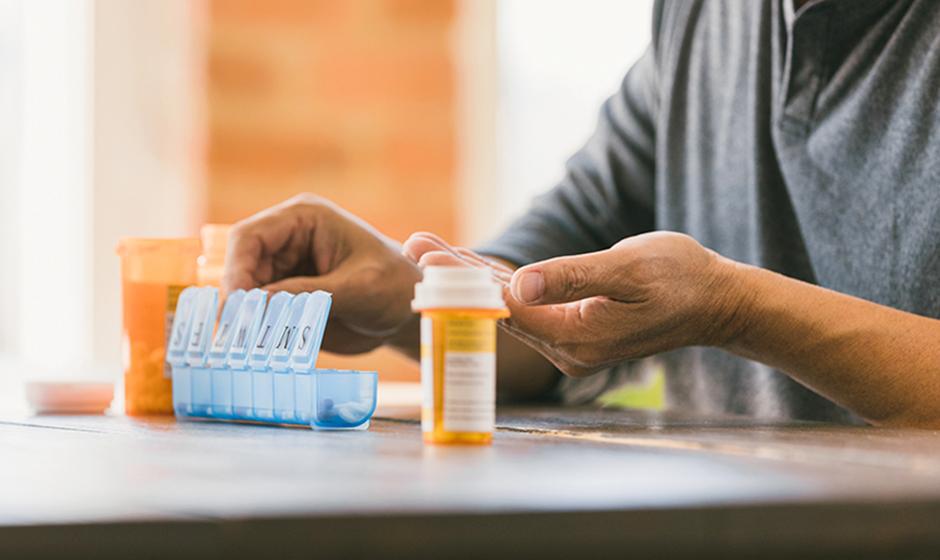
Study results point to a need for learning messages for patients and care providers to prevent adverse drug events.
Preventable adverse drug events (pADE) are behind upwards of 10 per cent of hospital admissions. Reducing this figure to zero is behind Dr. Jane de Lemos’s research, which lays out a blueprint for checks and balances that can curtail hospitalizations from pADEs, as well as approaches to better inform and empower patients.
“Peer-reviewed studies show that patients can reduce their risk of hospital admission when they know how to manage worsening symptoms from heart failure, COPD [chronic obstructive pulmonary disease] or asthma,” says de Lemos, a Vancouver Coastal Health Research Institute researcher.
“If we do a better job of sharing important details about patients’ medication and condition while they are still in hospital, they will be less likely to be readmitted to hospital due to preventable adverse drug events.”
pADEs are any preventable harm that comes from taking or not taking a prescribed medication. Accounting for 15 per cent of hospitalizations among patients ages 65 and older, and 20 per cent of acute care patient admissions in hospital, research suggests that half could be prevented with better prescribing, monitoring and self-management strategies.
de Lemos’s research, published in BMJ Open Quality, identified the most common root causes of pADEs that lead to hospitalization, and distilled key findings into learning messages to share with care providers and patients/ families. An electronic learning and surveillance system was also developed to share lessons and information about the root causes of pADEs on an ongoing basis—“the intent being to prevent their future occurrence,” says de Lemos.

COPD and asthma together were the leading cause of pADEs, responsible for 13.3 per cent of the 121 adverse drug event cases de Lemos and her research team studied at Richmond Hospital between November 2016 and December 2017.
Of the patients who were admitted to hospital for an adverse drug event, 12.5 per cent experienced bleeding due to a pADE, 12 per cent for hypotension, 10 per cent for heart failure and five per cent respectively for acute kidney injury and pneumonia.

de Lemos and her research team found that the cause of one third of these pADEs was care providers not confirming that patients or family members understood the information given to them about how to properly follow a prescribed treatment. Almost one quarter of pADEs were due to patients being unaware of when a medication may be causing a negative side effect.
Not knowing how a medication helps them or not having their concerns addressed was found to be behind almost 17 per cent of pADEs that resulted in medication non-adherence. As well, not knowing how to identify that a medication is working accounted for just over 14 per cent.
“We need to ensure that patients and family members fully understand how a medication can help them, how to know if it is working and what to do if it is causing a negative side effect.”
“We know that there are many tools available to help inform patients and family members about medications and conditions; however, more needs to be done to check whether that information has been accurately understood,” says de Lemos. “This requires asking open-ended questions and engaging patients in a dialogue. It can be challenging given the numerous demands on care providers’ time, but one that could reduce admissions.”
Over the course of the study, two patients’ deaths were attributed to adverse drug events.
The role of sick day plans and key learning messages
Another major pADE concern identified in de Lemos’s research is that many patients did not know that they should sometimes temporarily suspend taking certain medications when sick.
Many patients need a ‘sick day plan’ for select medications, i.e., information to help them determine when to stop taking it should they become ill, explains de Lemos. “For example, diabetic and other medications should be temporarily stopped if a patient is not drinking enough fluid or eating enough, as this can lead to acute kidney injury due or dangerously low blood pressure or low blood sugar.”
“About half of the preventable adverse drug events due to low blood pressure that presented to hospital could have been prevented with a sick day plan.”
Other conditions, such as COPD and heart failure, could benefit from action plans that patients can use at home to identify when they might need to modify their medication.
de Lemos’s study lists 10 key learning messages that have been developed into shareable documents for patients and care practitioners. These documents include a sick day medication management plan; COPD flare-up and asthma action plans; and a medication mix-up prevention message for providers.
“Research shows that the risk of hospitalization is decreased when patients can safely initiate treatment modifications from home using these action plans for heart failure, COPD and asthma.”
“For example, a regular weighing regimen can help prevent worsening heart failure symptoms,” de Lemos notes.
“There is a connection between fluid gain, weight gain and heart failure symptoms. Patients who understand this are more likely to be able to manage their conditions from home by weighing themselves daily and taking additional diuretics if prescribed by their physician as part of an action plan to prevent worsening of heart failure symptoms. This could avoid hospitalization due to a preventable adverse drug event.”
Some of the recommendations that came from de Lemos’s study are already being rolled out across Richmond Hospital. She says the next steps will be “to continue to share these with other providers in the community and enhance knowledge translation efforts.”


